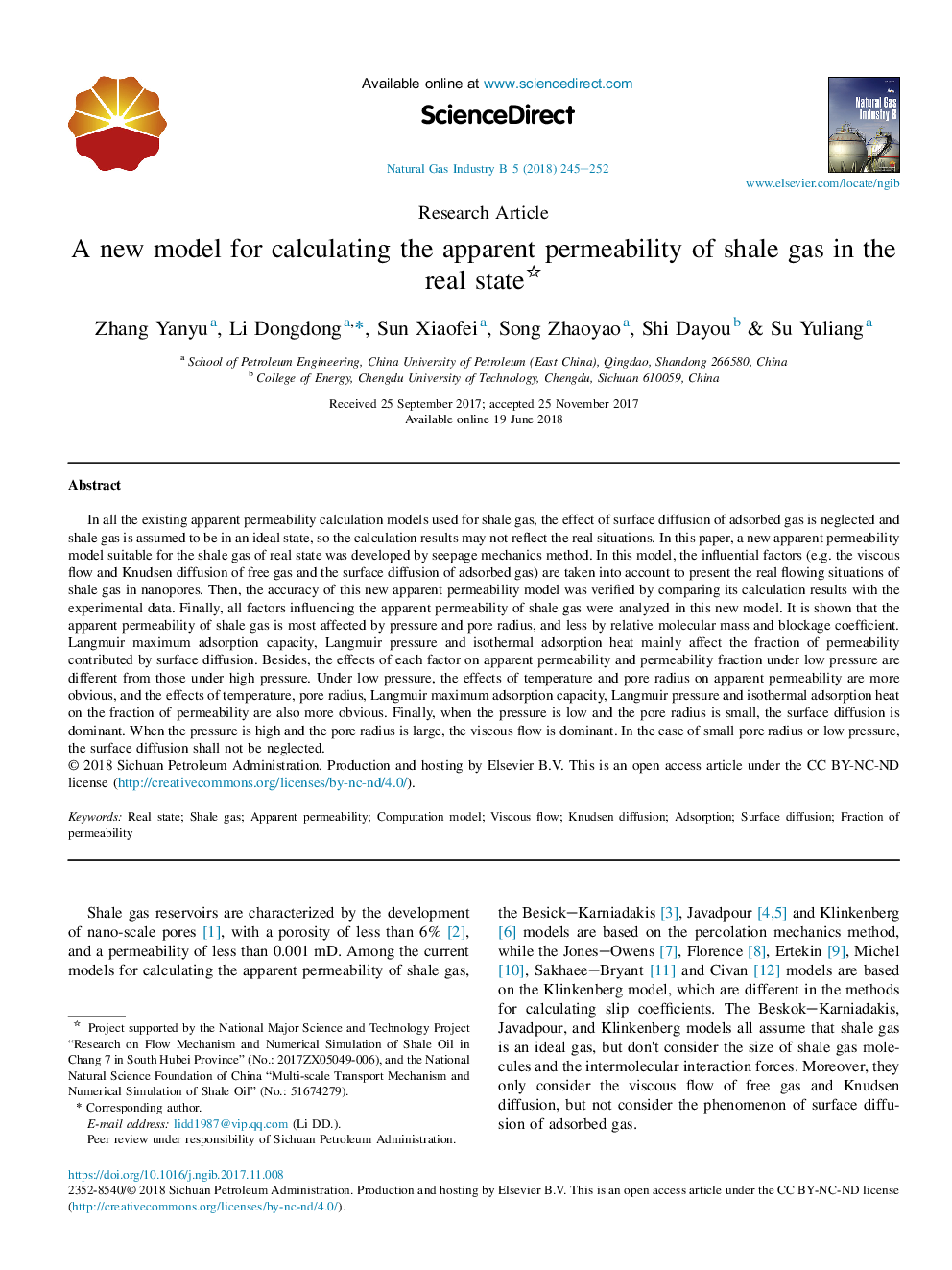| Article ID | Journal | Published Year | Pages | File Type |
|---|---|---|---|---|
| 8109505 | Natural Gas Industry B | 2018 | 8 Pages |
Abstract
In all the existing apparent permeability calculation models used for shale gas, the effect of surface diffusion of adsorbed gas is neglected and shale gas is assumed to be in an ideal state, so the calculation results may not reflect the real situations. In this paper, a new apparent permeability model suitable for the shale gas of real state was developed by seepage mechanics method. In this model, the influential factors (e.g. the viscous flow and Knudsen diffusion of free gas and the surface diffusion of adsorbed gas) are taken into account to present the real flowing situations of shale gas in nanopores. Then, the accuracy of this new apparent permeability model was verified by comparing its calculation results with the experimental data. Finally, all factors influencing the apparent permeability of shale gas were analyzed in this new model. It is shown that the apparent permeability of shale gas is most affected by pressure and pore radius, and less by relative molecular mass and blockage coefficient. Langmuir maximum adsorption capacity, Langmuir pressure and isothermal adsorption heat mainly affect the fraction of permeability contributed by surface diffusion. Besides, the effects of each factor on apparent permeability and permeability fraction under low pressure are different from those under high pressure. Under low pressure, the effects of temperature and pore radius on apparent permeability are more obvious, and the effects of temperature, pore radius, Langmuir maximum adsorption capacity, Langmuir pressure and isothermal adsorption heat on the fraction of permeability are also more obvious. Finally, when the pressure is low and the pore radius is small, the surface diffusion is dominant. When the pressure is high and the pore radius is large, the viscous flow is dominant. In the case of small pore radius or low pressure, the surface diffusion shall not be neglected.
Keywords
Related Topics
Physical Sciences and Engineering
Energy
Energy Engineering and Power Technology
Authors
Yanyu Zhang, Dongdong Li, Xiaofei Sun, Zhaoyao Song, Dayou Shi, Yuliang Su,
